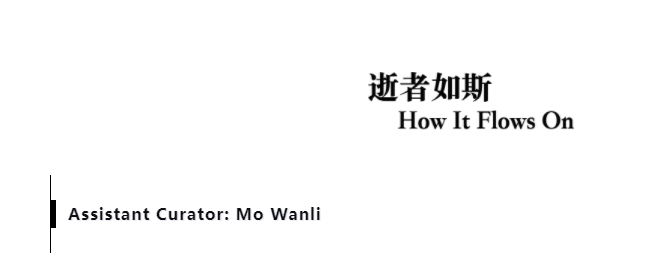
She is a doctoral student at the College of Architecture and Urban Planning, Tongji University. She received her Master of Architecture Degree from Yale University;
Mo is the curator of Home, Sweet Home(2017) exhibition at Shanghai Power Station of Arts. She has also served as an assistant curator of the Pavilion of China, Biennale Architettura, 2018 Shanghai Urban Space Art Season 2017;
Since 2018, she has served as the acting editor of Architecture China. She has published multiple times in Architectural Journal, Time+Architecture, The Art Newspaper.

As a young architecture scholar and curator, she has curated many art exhibitons. She, together with her classmates Deng Yuanye and Lin Lin, formed the curating team “Discussion Group of Housewives”, and jointly created the exhibition “Home, Sweet Home” (Power Station of Art, 2017). The exhibition focused on the observation of women’s different identities in society and the thinking of the relationship between women and family. The exhibition won the first prize in the “Emerging Curators Project” of Power Station of Art in 2017 after four months of implementation.


In 2018, she and the curating team curated the exhibition “Still Life” at OCAT Institute in Beijing. The exhibition abstractly restored the spatial structure of the collectivist “building”.

Mo Wanli has also served as the assistant curator of China Pavilion of the 16th Venice International Architecture Biennale and Shanghai Urban Space Art Season 2017. While pursuing the academic value of curation, she has also published many professional articles in journals such as Architectural Journal, Time+Architecture, Urban-Environment-Design, Retrospecta, Wallpaper, The Art Newspaper, etc.

Mo: In 2020, the epidemic seems to have changed everyone's lives fundamentally, but it also has also accelerated some trends that previously existed. The exhibition How It Flows On is quite interesting in the way that through the collaboration between architect and artists, we accomplished a simultaneous connection of different places. This is one of the many things that the epidemic has left us with—a brand new and significantly important experience of space. Whether it is online conferences, seminars, exhibitions or art fairs, it pushes us to start using virtual methods to experience what happens in the real world. It also made the issue of how to demonstrate the realistic qualities of public space in the virtual world and its implicit publicity become urgent issues.
The exhibition brings the audience a kind of defamiliarization experience of the urban space and daily life through the superposition of the image of Riverside Passage and a series of weightless animation characters created by artist Qiu Anxiong. On the one hand, it opens up a new perspective for us to experience the city; on the other hand, it triggers a reflection on the current life state through the weightlessness. I also look forward to the polyphonic music performance created by the musician Jin Wang at the opening ceremony. It seems to establish a new connection through simultaneous performance of musicians at different places across the Huangpu River.

Mo: I think the combination of the two spaces which differ from each other in function and form almost create a narrative of history. Located in the abandoned industrial site, the Riverside Passage is a witness of Shanghai’s past industrial history; while the L+ Mall in Lujiazui is part of the most contemporary and lively part of the city of Shanghai . By reproducing the scene of the Riverside Passage in APSMUSEUM through fast-speed network and screens, it enables the audience to experience another dimension of time.

Mo: In the past, architecture has always been considered as a subject of art. In fact, since ancient times, the boundary between architects and artists have always been vague. For example, the artist Gordon Matta-Clark studied architecture at Cornell University, that is why his understanding of space is demonstrated in many of his artworks. Moreover, architects such as Kazuyo Sejima, Sou Fujimoto, and Jun'ya Ishigami have created many art installations. I think the combination of art and architecture brings more perspective for people to understand space, and also new angles for artistic creations. Furthermore, it could also introduce the concept and critical analysis in art and expand our old understanding of architecture.

Wanli Mo,an emerging curate and architecture scholar.
Her research focuses on contemporary forms of life and its relationship with material and immaterial productions. Mo has published widely in Architectural Journal, Time+Architecture, Urban Environment Design, Retrospecta and etc. Since 2018, she has served as the acting editor of Architecture China. Mo is the curator of Home, Sweet Home(2017) exhibition at Shanghai Power Station of Arts. She has also served as an assistant curator of the Pavilion of China, Biennale Architettura, 2018 Shanghai Urban Space Art Season 2017.
She is also a doctoral student at the College of Architecture and Urban Planning, Tongji University. She received her Master of Architecture Degree from Yale University.